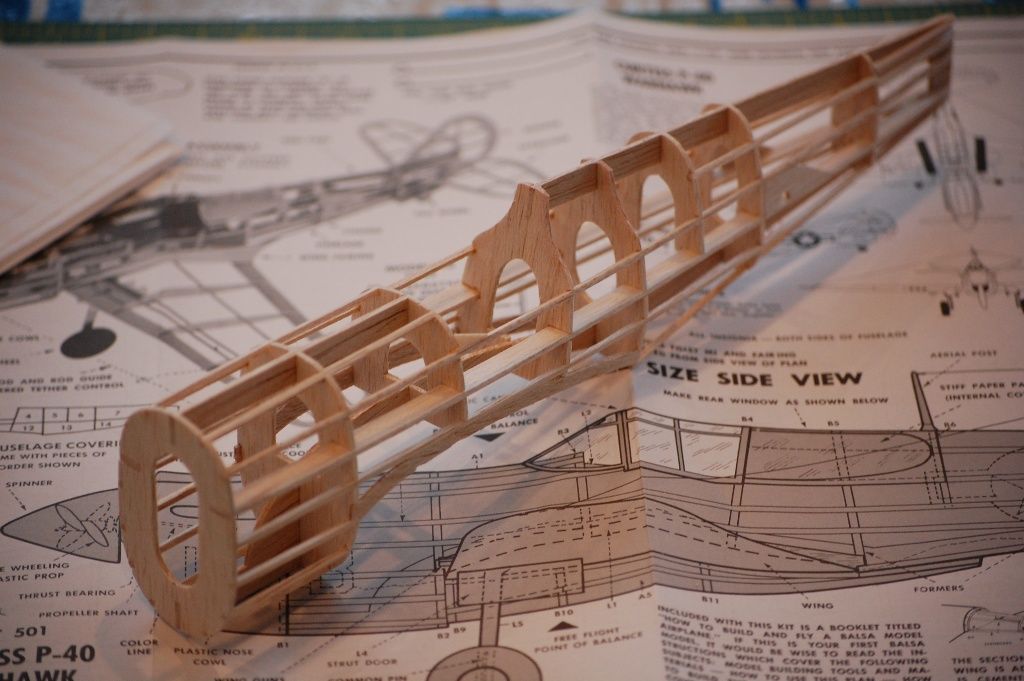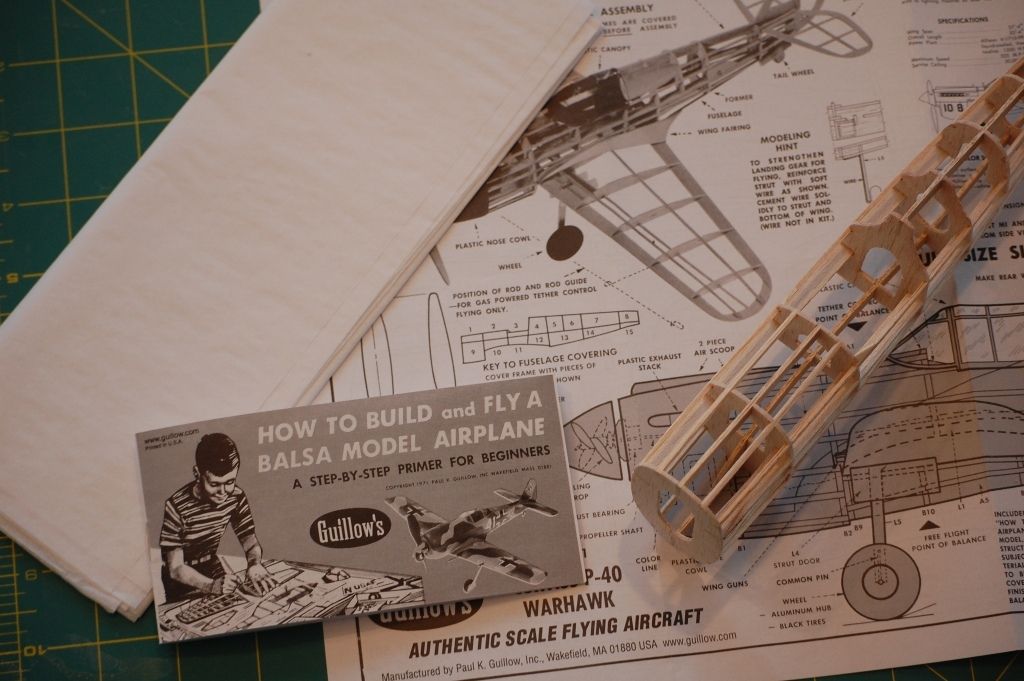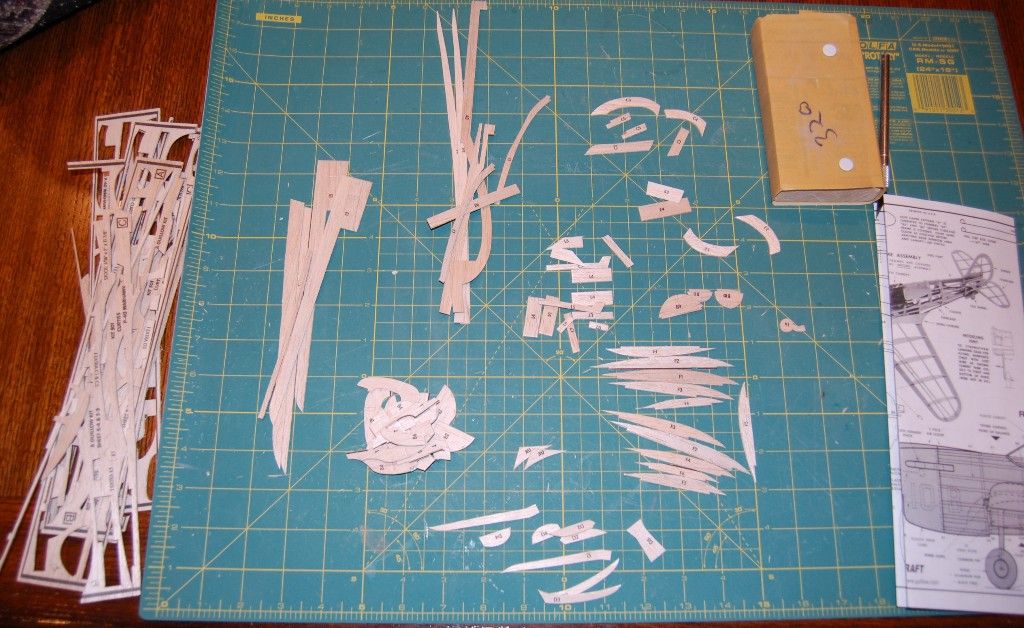On this forum, I have shown different techniques of covering using different types of tissues. I have used domestic, Esaki and Guillows tissue. I have used the dry method covering in sections and used the wet method to apply tissue. The wet method produces the best looking model but is the hardest to master, especially when using domestic tissue. This time I decided to use the Guillows directions when applying tissue. I took a bunch of pictures as I was going along. The directions show how to cover the fuselage in multiple sections for a wrinkle free finish. Guillows uses dope to attach the tissue, I used 50/50 water/Elmers glue. I also used the kit tissue. I normally scallop the formers before covering, this produces a smooth covering job. With Guillows diagram, I was unable to do this since I had to attach the tissue to the formers. Because of this, I had to make sure everything was sanded even so no wrinkles would develop. Guillows does stress sanding in the directions. I covered dry and I must say it was real simple. Like all building stages, you just have to take your time. Everything went on like a charm and no wrinkles developed. The portion of the fuselage behind the canopy could use another stringer running towards the stab, there is a starved look there. I cut the pieces of tissue out directly over a xeroxed copy of the plans, this limits trimming. I covered the wing, stab and rudder as per the directions. I do have a method for covering the top of the wing so there are no wrinkles and it is explained in my Messerschmidt build.
http://balsamodels.com/phpBB/viewtopic.php?t=1589
After all was covered, I sprayed with alcohol and everything shrunk nice and taught. Now I am ready for two coats of dope. I don't ever see me covering like this again, but it does work if you are looking for a wrinkle free smooth covering job, especially if you are struggling with other methods.

















